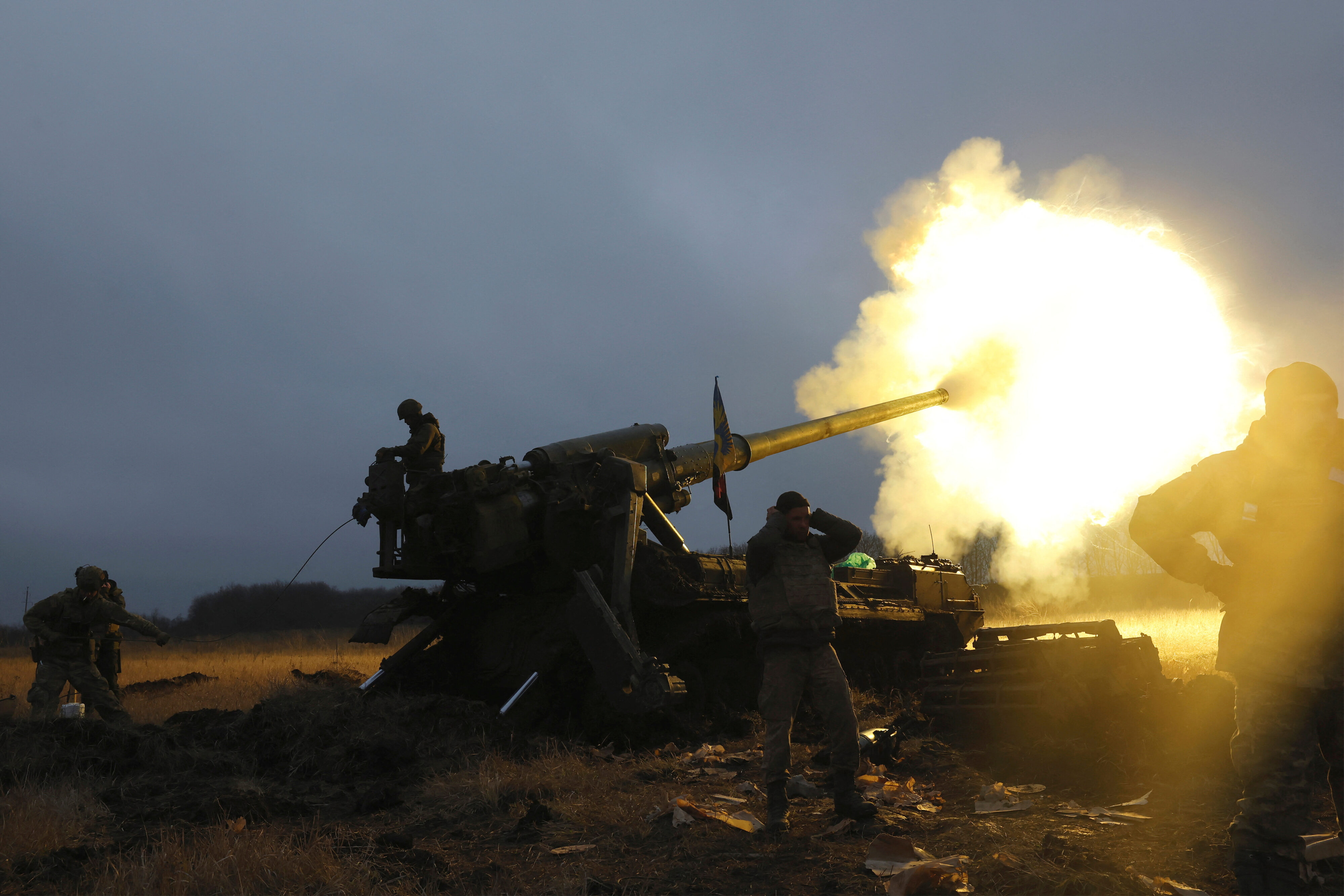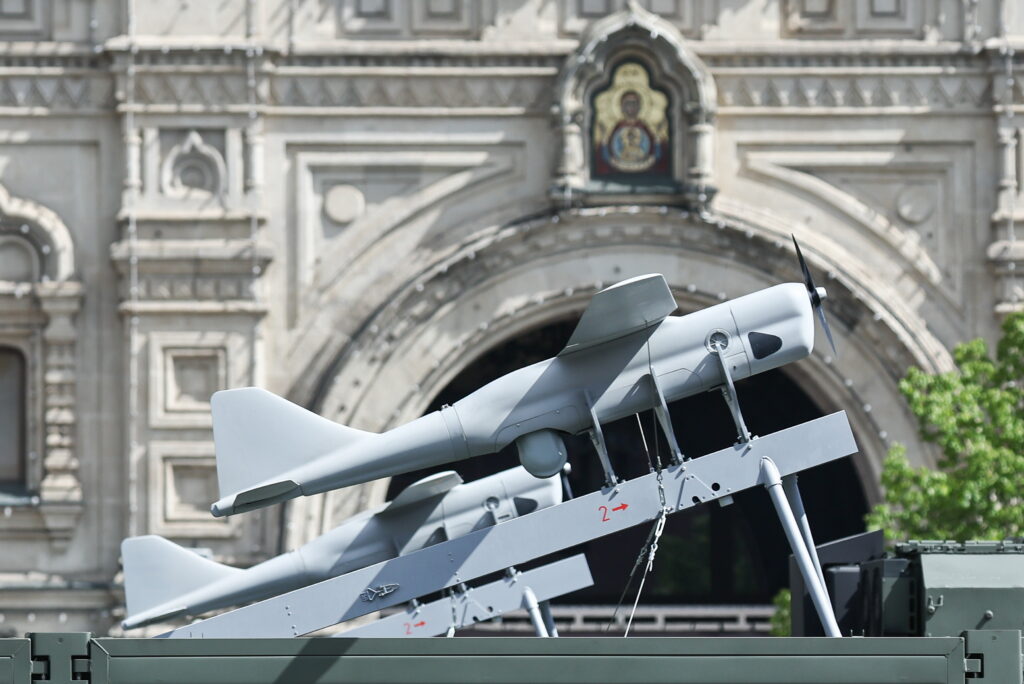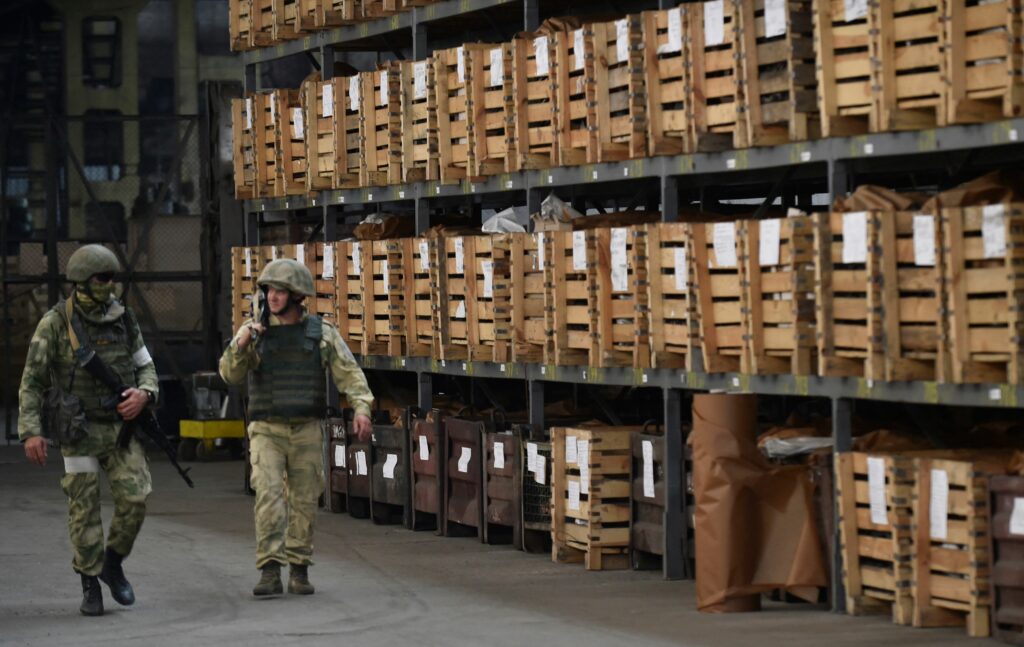Following Ukraine’s successful offensives in the fall, the Russia-Ukraine war has shifted into a transitional phase, with both sides engaged in positional battles characterized by incremental gains and attrition. Although the tempo of fighting appears to have slowed down, in part due to the onset of winter, it remains intense along several parts of the front. The coming months could determine the course of events well into 2023. This phase may be transitional and is not necessarily how the winter will play out, as Ukraine is likely eyeing opportunities for another offensive operation, but the broad contours of Russia’s and Ukraine’s strategy appear visible. The Russian military appears to be entrenching, focused on reconstitution, while elements continue fighting for Bakhmut. Ukraine seeks to maintain pressure on Russian lines to prevent a consolidation of the front and avert a Russian recovery coming out of the winter.
Fighting over Bakhmut is a strong indicator that the Donbas is still Moscow’s minimal war aim, even if the military means at this stage do not permit much more than localized offensives. Despite recent public statements by senior Ukrainian officials that Russia could launch a major offensive in the winter-spring period, or attempt to return to Kyiv, there is little evidence of this capacity in the offing. The equipment and ammunition required for such a campaign is unlikely to materialize on such short timelines. In its Donbas offensives over the spring and summer, the Russian military lacked manpower and compensated for this deficit with firepower. Following mobilization, the Russian armed forces now have manpower, but will find themselves constrained by availability of ammunition and equipment. All other factors remaining constant, the Russian military will struggle to recover offensive potential because of these challenges.
Yet the withdrawal from Kherson has significantly reduced the frontage that Russian forces have to defend, while mobilization likely doubled the manpower deployed in Ukraine, allowing them to establish reserves, and rotate forces. The Russian military may not be able to conduct large offensives, beyond localized attacks in the Donbas, but as Kherson suggests it can offer a stubborn defense such that this becomes a protracted war. Hence the coming months may see a Russian military that is sluggishly trying to advance in several sectors of the Donbas, but its more defining feature is a stronger capacity to defend. That said, much depends on the operations Ukraine elects to pursue, and the extent of material assistance Kyiv receives from Western countries.
A change of approach
Russian forces are entrenching along several fronts, hoping that mobilization together with the enactment of wartime measures will replenish badly needed manpower. Mobilization, fraught and shambolic at the outset, generated considerable manpower and stabilized Russian lines in Luhansk. Mobilized personnel also aided in covering the Russian retreat from Kherson. Perceptions of Russia’s phased mobilization do not necessarily align with its impact. To put it plainly, Ukraine has made incremental progress along the Svatove-Kreminna line (Luhansk), but has had no major breakthroughs since mobilized personnel were deployed. Russia has likely deployed 100,000+ mobilized personnel at this stage, while having generated somewhere approaching the 300,000 officially stated numbers. Mobilization could prove to be a rolling process, which was paused for the biannual draft intake of 120,000 conscripts this fall, but may resume in 2023.
The net effect of mobilization will prove difficult to discern for another several months during which the Russian military will raise manning levels in existing units, and create new formations, such as territorial units with reservist level equipment (T-62M tanks, D-20 howitzers, MT-LB tracked carriers). Mobilization may not fix the qualitative, or force employment issues in the Russian military, but quantity does matter. Consequently, Russian strategy is working with time as one of its chief elements, and the belief that the war will pose a growing burden on Western countries, leading to a desire for negotiations and concessions. At this stage Ukraine is driving events in Luhansk, making steady gains near Kreminna, while for the moment Russian forces seem to have the initiative in Donetsk, though their offensive at Bakhmut comes at considerable cost and is vulnerable to counter-attack. That said, Ukrainian forces are also suffering losses, as recent rotations around Bakhmut, and reinforcements from Kherson might suggest.
A strategic strike campaign
The Russian strike campaign, targeting Ukrainian critical infrastructure, is part and parcel of this strategy. Timed to coincide with onset of cold weather, Russian strikes are steadily degrading Ukraine’s electricity, and water management infrastructure. This campaign could grow in significance, and is one of the better organized Russian efforts since the strikes conducted in the first days of the war. An additional effect is draining Ukrainian air defense of ammunition, which could result in Ukraine having to choose between covering the front line, and defending its cities. Acquiring Western air defense, and a stable supply of air defense missiles, is therefore a near term priority for Ukraine.
Fortunately, the Russian military exhausted a large percentage of its long-range precision guided weapons over the course of the spring and summer. There is growing evidence that Russia is using recently made missiles, and much older missile types with dummy warheads to stimulate air defenses, which could suggest dwindling stocks. What this means in practice is that eventually waves of Russian missile strikes may diminish to the amount that its industry can produce monthly. Consequently, Russia is also growing in dependence on imports of Iranian strike drones to supplement its missile inventory.
However, optimistic claims that the Russian military has run out of cruise missiles, which have been voiced with some regularity during this war, seem unfounded. Despite a visible reduction in numbers of missiles employed relative to the early months of the war, Russia’s stocks and/or missile production capacity appears quite larger than publicly estimated (including in the pages of this publication). Ukraine’s General Skibitsky, deputy chief of intelligence, recently offered estimates of 240 Kh-101, and 120 Kalibr produced since the start of the war. Mobilized production is also an indicator, with increased shifts at plants, and expanding workforce, indicative that the Russian military-industrial complex expects it has components available for assembly. Undoubtedly, the picture is quite uneven across the Russian military industrial complex, and Moscow will have to make choices on which weapon systems to prioritize given constraints in capacity and component availability.
Sanctions and export controls will eventually crimp Russia’s missile production rate, delaying acquisition, increasing costs, and forcing redesign of systems, but they are unlikely to have a significant impact on short timelines. Sanctions are not talismanic. The broader the sanctions regime, the greater the enforcement challenge. States like Russia, or Iran, create front companies and adaptable supply networks to source components for their defense sectors. They can also redesign systems around the components that they’re able to acquire. Sanctions will have long term consequences for Russia’s capacity to rearm, and manufacture high-tech systems, but expectations should be kept realistic about what they can achieve in the short term (and in the long term). Russia’s defense sector is still producing tanks, aircraft, and missiles ten months into the war.
Ukraine’s strategy
Kyiv will try to maintain pressure on Russian forces over the course of the winter, whether by attrition or offensive operations. Although winter conditions make offensive operations challenging, Ukraine is better positioned to conduct them than Russia, and a major winter offensive is possible in the coming months. These can be combined with strikes deep behind Russian lines, and special forces raids to conduct sabotage. Kyiv’s objective is to retain the initiative and prevent the Russian military from being able to go on the offensive either during the winter, or after it in the spring. Ukraine continues to benefit from Western training and expanded access to weaponry. Whether by attrition, or maneuver, Ukraine is likely to retake additional territory. That said, the history of this war suggests that maneuver warfare proved successful because attrition made it possible.
Ukraine’s victory in Kherson was a significant strategic success, after months of grinding fighting, and losses on both sides, the UAF was able to press the Russian military out of its position on the right river bank. Yet the Russian military was able to successfully withdraw across the Dnipro river, together with much of its working equipment. Russian forces have already redeployed, with some arriving at Bakhmut. Ukraine too has shifted units east of the Dnipro, and move up long range fires to encompass much of Russia’s logistical network in Kherson. The Kherson offensive offers room for cautious optimism that Ukraine can continue to retake occupied territory, but given the significant advantages Ukrainian forces enjoyed in Kherson, it also suggests future offensives could prove similarly costly and incremental in nature. Kherson appears a better guide for expectations than the unexpected breakthrough at Kharkiv against thinly manned Russian positions.
The most important near-term issue for Ukraine right now is improving air defense. Ukraine also faces ammunition constraints, with a yawning gap between its consumption, and production rates in Western countries. Consequently, the U.S. has been taking significant amounts of ammunition out of its stocks to make up the difference. Precision munitions may offer a qualitative offset, but Ukraine’s ammunition requirements create a medium to long-term challenge that Western countries must address. Ukrainian forces are fighting more efficiently than the Russian military, but this remains largely an artillery driven war whose defining strategy is more attrition than maneuver. Thus, it may take a significant relative advantage in fires for Ukraine to get through Russian defensive lines. The U.S. has begun training the Ukrainian military in combined arms at the company and battalion level, which is an important development, but its unclear that this can offer a sufficient edge to make the difference. That said, war is highly contingent, and Russian strategic blunders could create those opportunities over time.
The Russian military faces even greater problems when it comes to artillery ammunition. Fighting for Bakhmut only further expends available fires. In this regard Russian war aims still impose a mismatch with military means available. Anecdotal evidence suggests the Russian military is trying to conserve artillery and equipment use in Donetsk. While Western official estimates range significantly, they represent a narcissism of not very great strategic implications. The delta in these assessments is that the Russian military will either face an ammunition crunch come spring or fall of 2023. Access to ammunition from North Korea could tide Russia over, depending on how much they acquire, but ultimately Russian rate of use exceeds production by a wide margin. In fairness, this is a significant assumption, but the matter will become clearer in the coming months. If the Russian military has both the fires, and the manpower, then they will attempt a major offensive in the Donbas. However, if ammunition is a leading constraint, then Russian offensive potential will be limited to pushes for smaller cities like Bakhmut, and localized counter attacks.
Of scenarios and expectations
Although this analysis is far from comprehensive, and is based on at best an incomplete picture of the state of Russian and Ukrainian forces, there are three useful scenarios to consider for how events might evolve over the winter. The Russian line could collapse along one of the fronts due to low morale, insufficient supplies, and a renewed Ukrainian offensive during the winter that takes advantage of these conditions. This could yield another Ukrainian breakthrough, though such a turn of events is well within the realm of possibilities, it is optimistic. Alternatively, a pessimistic outcome is one where Russian forces are able to reconstitute, and launch larger offensives after February, beyond current attacks in Donetsk. This is unlikely given constraints in available ammunition, current quality of manpower, and assumes there are no major improvements in force employment.
Perhaps a more probabilistic scenario for the next several months is one of a dynamic front, characterized by attrition, and localized offensives by both sides, but one where Ukraine on balance retains initiative, and can steadily progress towards its goals. After Kherson, the Russian military appears better positioned to consolidate, and defend, but battles like Bakhmut and Pavlivka are cause for skepticism that it can restore significant offensive potential. The Russian military is focused on taking Donetsk, hence the fixation on capturing Bakhmut, and attempts at positional gains in the southern part of this oblast.
The Russian Bakhmut offensive is not senseless, but it is strategically unsound, given there is no discernible capacity for a Russian breakthrough with momentum even if Russian forces capture Bakhmut. There are no supporting axes of advance making good progress, and seizing the city would prove a tactical gain in exchange for strategic expenditures of ammunition and equipment. Russian positions would then be vulnerable to Ukrainian counter attack. At best it would allow Russian forces to take up a more favorable defensive line. Even though Bakhmut could fall, the battle overall is more representative of enduring problems in Russian military strategy than their resolution. Quite possibly, the overall Russian commander for this war, General Surovikin was allowed to withdraw from Kherson under the condition that Russian forces reconstitute for a renewed assault on the Donbas. Hence, he is grudgingly prosecuting a griding offensive while focusing the military effort on establishing layered defensive lines, fixing manning issues, and reconstituting the force.
There are also concerns, as unlikely as it may seem, that Russian presence in Belarus could evolve in the coming months, proving prelude to a renewed northern front. Russian forces there do not appear sufficient for a major operation at this stage, and any incursion would require a fairly sizable deployment which would provide lead time in indicators and warnings. In brief, whether unlikely or not, plans a renewed Belarus campaign would be difficult to conceal and perhaps no less difficult for the Russian military to execute. More concerning in the near term is the prospect that Russian Aerospace Forces could become more effective on the battlefield if Ukraine is forced to decide between positioning air defense for protecting its cities and the front lines.
Despite signals in some capitals suggesting that this period may represent an opening to negotiations, present conditions make this proposition unlikely. There is no stalemate on the ground, and neither side is willing to revise its minimal war aims. Ukraine has been winning since August. A ceasefire at this stage would largely benefit Russia. Past experience suggests Moscow will use it to reconstitute forces after several months, and renew the war. Furthermore, a premature cessation of hostilities is only likely to ensure a continuation war, as neither side in the conflict would achieve their war aims. This is not to say that negotiations are imprudent at a later point, or that attempts to think through how this war ends and manage escalation are misguided. Even in the event of a decisive Ukrainian victory, Putin may not acknowledge defeat, and continue a war of attrition.
Ukraine remains relatively advantaged in this war, although said advantage is not predictive of outcomes. What worked up until this point in the war may not yield the same benefits without adjustments to training, capabilities provided, defense industrial production, and rates of ammunition consumption. The course of events thus far has been far from overdetermined, but Ukraine’s military has consistently over performed, proving more competent and better motivated, while the Russian military underperformed relative to expectations.
Importantly, Ukraine’s war effort hinges on sustainability of external military and economic support from Western countries — in particular the United States. A strategic defeat for Russia in this war is not the same as a victory for Ukraine. They are interrelated, but distinct goals. Taken together, the armed forces, economies, and defense industrial capacity of these countries represents far greater capacity, and potential than that of Russia. But potential is just that, it does not automatically translate into results, unless the political will is there to overcome material, and policy constraints.










